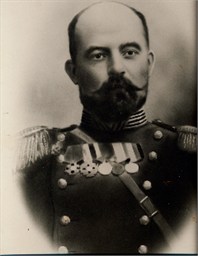Ever wonder how much it cost to put someone to death? Ok, I haven't either, but I'll bet your curiosity will get the better of you on this one. I mean, 2 rubles for the hangman's traveling expense?
Revolutionary novelist Victor Serge
is one of the most compelling figures of Soviet history. First
published in 1926 as Les Coulisses d’une Sûreté générale, Serge set
forth a manifesto which exclaimed "the epoch of civil wars has begun."
Following is an excerpt from Serge's nonfiction book "What Everyone Should Know About Repression."
In
among all the red tape and paperwork of the Tsarist police there abound the
saddest of human documents, as we have already seen. Although it is a little
outside our subject, I think we should devote a few lines to a series of simple
receipts for small sums of money, found enclosed in one of the files.
Especially as these little slips of paper appear all too often after the
liquidation of revolutionary groups, swelling the files already crammed with
details of surveillance and informing. As a kind of epilogue ...
These
are the documents which tell us how much an execution cost the Tsarist judicial
system. They are the receipts signed by all those who collaborated, directly or
indirectly, with the hangman.
All
in all, not very dear. The sums to the priest and the doctor are especially
modest. The priesthood of the one and the profession of the other after all
surely imply devotion to humanity.
Expenses for the
execution of the brothers Modat and Djavat Mustapha Ogli,
sentenced to death by the court-martial of the Caucasus
|
|
Rubles
|
Transportation of the condemned men from the Metek
fortress to the prison, paid to the carters
|
4
|
Other expenses
|
4
|
For having dug and filled in two graves (six
grave-diggers each signed a receipt for two rubles)
|
12
|
For setting up the gallows
|
4
|
For supervising the job
|
8
|
Travelling expenses for a priest (return)
|
2
|
To the doctor, for the death certificate
|
2
|
To the hangman
|
50
|
Hangman’s travelling expenses
|
2
|
|
At
this point we should perhaps have a chapter headed: Torture. All police
forces resort in varying degrees to medieval “interrogation”. In the USA they
practice the terrible “Third Degree”. In most of the European countries,
torture has become generalized because of the resurgence of the class struggle
following the war. The Roumanian security services, the Polish Defence
Ministry, the German, Italian, Yugoslavian, Spanish and Bulgarian police – and
there must be others we have missed out – frequently resort to it.
The Russian
Okhrana preceded them in this, though with a certain degree of moderation.
Although there were cases, even many cases, of corporal punishment (the knout)
in the prisons, the treatment the Russian police meted out to prisoners before
the 1905 revolution seems to have been generally more humane than is the case
today when workers are arrested in any one of a dozen European countries. After
1905, the Okhrana had torture chambers in Warsaw, Riga, Odessa and apparently
in most of the great urban centers.

Comments
Post a Comment